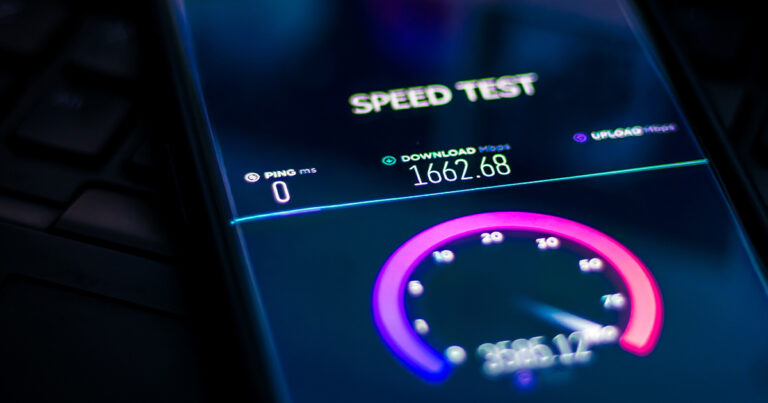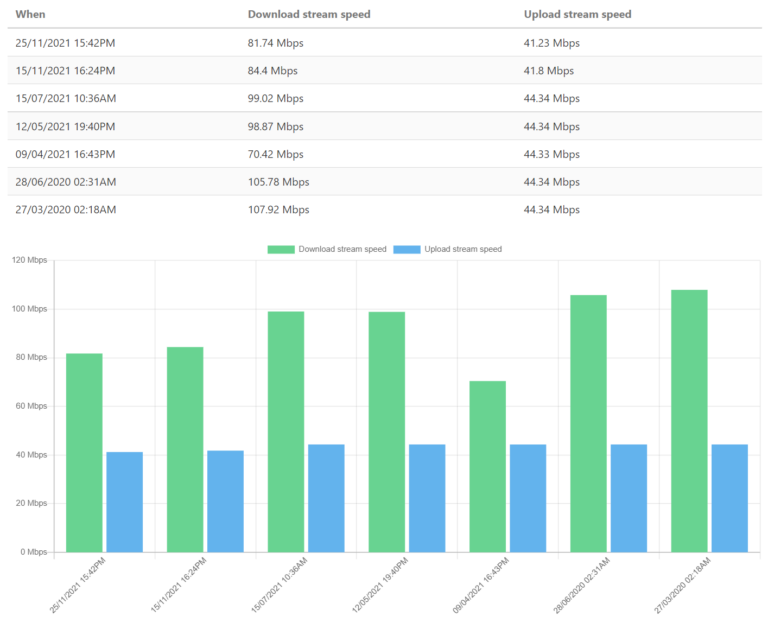Has your NBN provider used the phrase “NBN isolation test” during troubleshooting? Here’s what it means, how to do it and how it compares to other tests.
NBN isolation test vs line test vs speed test
There are many interchangeable terms when it comes to NBN. Like, an NBN modem is also called an NBN box or NBN NTD. Sometimes an NBN modem-router is erroneously called a modem, or a router is called a modem. And when it comes to troubleshooting NBN speed issues, the somewhat similar terms ‘NBN speed test’, ‘NBN isolation test’ and ‘NBN line test’ may be thrown around.
So, let’s take a close look at what an NBN isolation test is, how it differs from a traditional NBN speed test and how to properly perform one.
What is an NBN isolation test?
An NBN isolation test is a series of structured steps that are followed to help determine whether the cause of slow connection speeds are inside the home or an external cause. Your NBN provider may ask you to perform one of these tests if you’re complaining that your download or upload speeds are below expected values.
Download speeds are by far the easiest to compare, especially for most Australian homes connected to the NBN via fixed-line technologies. This is because NBN providers are required to advertise the expected typical evening download speeds for Fibre-to-the-Premises (FTTP), Hybrid Fibre Coaxial (HFC), Fibre-to-the-Curb (FTTC), Fibre-to-the-Building (FTTB) and FTTN connections. Performing an NBN speed test between 7:00pm and 11:00pm any night of the week, then comparing those results to the corresponding NBN plan from your provider is a great place to start.
If you’ve done a proper NBN speed test—ideally, while no other devices on your home network are using your internet connection and nothing is downloading or uploading in the background on your testing device—and the speeds don’t match up with your expectations, then it’s time to chat with your provider. They may ask you to perform additional tests, including an NBN isolation test.
NBN isolation test vs NBN line test vs NBN speed test

This is where things can get a wee bit confusing, depending on the terminology used by your provider and what troubleshooting needs to be done.
An NBN speed test is something that you can perform at home on any device connected to your home network. Note that download and upload speed results may differ depending on time of day, the age of the device you’re using, how close you are to your router or modem-router (for WiFi speed tests) and other speed-impacting factors.
An NBN line test is performed by your provider. They should perform this test if you’ve flagged speed concerns with them, and it’s a test of pure NBN speed potential between their provider network, across the NBN and to a point on the NBN close to your home. How close to your home exactly is determined by the NBN technology. For instance, line tests for FTTC homes will measure the speed from the provider network to NBN and then to the distribution point unit (DPU) that’s in the telecommunications pit outside your home.
Finally, an NBN isolation test is basically an advanced NBN speed test. It involves very particular steps (outlined below) that you need to methodically perform to get a speed-test result that’s reported to your provider and passed on to NBN Co. This information is then used to determine whether NBN Co intervention is required to fix a potential line fault that should, fingers crossed, lead to faster internet speeds.
Use that tool above to test your download speed and upload speed (also latency, if that’s of interest). Tap or click on the ‘Start Speed Test’ button to get going. After 10 seconds, you’ll see your download speed results in megabits-per-second (Mbps). Additionally, hit ‘Show More Info’ and wait another 10 seconds to see your upload speed in Mbps and your latency in milliseconds (ms).
Compare the results of this test with any advertised download speeds, upload speeds and latency information from your provider to see if your connection is up to snuff.
Speeds not what you expected? Consider switching to a faster provider
How to perform an NBN isolation test
If the results of your NBN speed test above are below par, whether that’s in terms of download or upload speeds, reach out to your provider. To impress tech support and get ahead of the curve, you may also want to perform an NBN isolation test ahead of being asked, so you can let them know it’s already done and hopefully move on to next steps.
Here are the steps to follow to perform an NBN isolation test:
- Power cycle your NBN modem or modem-router. This means disconnect the power from this device, wait a minute, then reconnect the power. Wait until all relevant operating lights come back on.
- For NBN technologies that use a router (basically, every technology except for FTTB and FTTN), unplug your router and leave it disconnected for 10 minutes. Alternatively, providers like Superloop allow you to enter your account portal and disconnect your session.
- For the next step, you need a computer that can connect via Ethernet cable. After the 10 minutes is up, connect your Ethernet cable to your computer and the other end to the relevant port on your NBN modem (UNI-D1 for FTTP, HFC, Sky Muster NBN and NBN Fixed Wireless; gateway for FTTC; Ethernet for FTTN and FTTB).
- On your testing computer, check there are no programs or applications that are using the internet. If there are, exit out of them, especially if you have any virtual private network (VPN) software running.
- Open a web browser window and type in the www.speedtest.net URL. Try to only have a single browser window and tab open to limit the chance of other browser tabs/windows impacting results.
- Speedtest should automatically find your local server. If it doesn’t, or if your provider asks you to use a specific server, click on ‘Change Server’ beneath the big ‘Go’ button and select the server that’s closest to your location.
- Click on that big ‘Go’ button to start the download, upload and latency tests.
- Wait around 35 seconds for these tests to complete. If the results are below expectations, copy the URL in the address bar and send it to your provider.
- Providers may ask you to perform these steps at different times of the day—say, morning, noon, and during peak hours at night (between 7:00pm and 11:00pm)—to paint a more accurate picture of daily results. This means you’ll need to record the Speedtest URLs from the different tests.
- Send these results to your provider ASAP. You may need to call them within 24 hours to discuss the results. According to my recent speed woes with Superloop, I was told NBN Co only considers test results to be valid for 24 hours). When speaking with your provider, ask them about next steps.

The picture above gives you an idea of different NBN line tests performed for my FTTC NBN 100/40 connection with Superloop. Note that these are the speeds to the DPU in the telecommunications pit outside my home and not reflective of the max speeds I reach in my apartment. The result third from the bottom was indicative of a hardware fault in the pit that was amended (apparently heavy rain and DPUs don’t mix), while the results towards the top are reflective of a speed issue I’m troubleshooting with Superloop.
NBN download speeds, upload speeds and latency expectations
Look at the list below for an idea of the max download and upload speeds for various NBN speed tiers:
- NBN 12 (all NBN technologies): 12Mbps download, 1Mbps upload
- NBN 25 (all NBN technologies): 25Mbps download, 5 Mbps upload (or 10Mbps with Aussie Broadband)
- NBN 50 (all NBN technologies): 50Mbps download, 20 Mbps upload
- NBN 75 (Aussie Broadband only): 75Mbps download, 20Mbps upload
- NBN 100/20 (FTTP, HFC, FTTC, FTTB and FTTN technologies): 100Mbps download, 20Mbps upload
- NBN 100/40 (Superloop, MyRepublic, Aussie Broadband, Pennytel, Exetel, Mate; FTTP, HFC, FTTC, FTTB and FTTN technologies): 100Mbps download, 40Mbps upload
- NBN 250 (FTTP and most HFC technologies): 250Mbps download, 25 Mbps upload
- NBN 500 (Superloop, Vodafone, Exetel; FTTP and some HFC technologies): 500Mbps download, 50Mbps upload
- NBN 1000 (FTTP and some HFC technologies): 990Mbps download, 50Mbps upload
Note that these max speeds aren’t necessarily indicative of the speeds you should expect to receive from your NBN provider; take note of a provider’s self-reported typical evening download speeds to verify whether your download speeds are in line with what you should expect.
It’s also worth flagging that different NBN technologies have inherent speed degradation—most notably Sky Muster NBN, NBN Fixed Wireless as well as FTTN, FTTB and FTTC—so your provider may confirm different download/upload speed expectations after you’ve signed up for a plan.
Only after the latest and greatest when it comes to your internet connection? Check out our picks for the best NBN plans in Australia. Regardless of whether you're a gamer or running a tight budget, we've got the answer to the question of which internet provider can offer you the best value.
For an idea of real-world speed expectations, the table below collates information from the ACCC’s December 2021 Measuring Broadband Australia program for participating providers on fixed-line NBN technologies (FTTP, HFC, FTTC, FTTB and FTTN).
The NBN speed tier (the most popular in Australia), with max 50Mbps download and 20Mbps upload, has been used as a guide for the speeds in the table.
Related Articles




